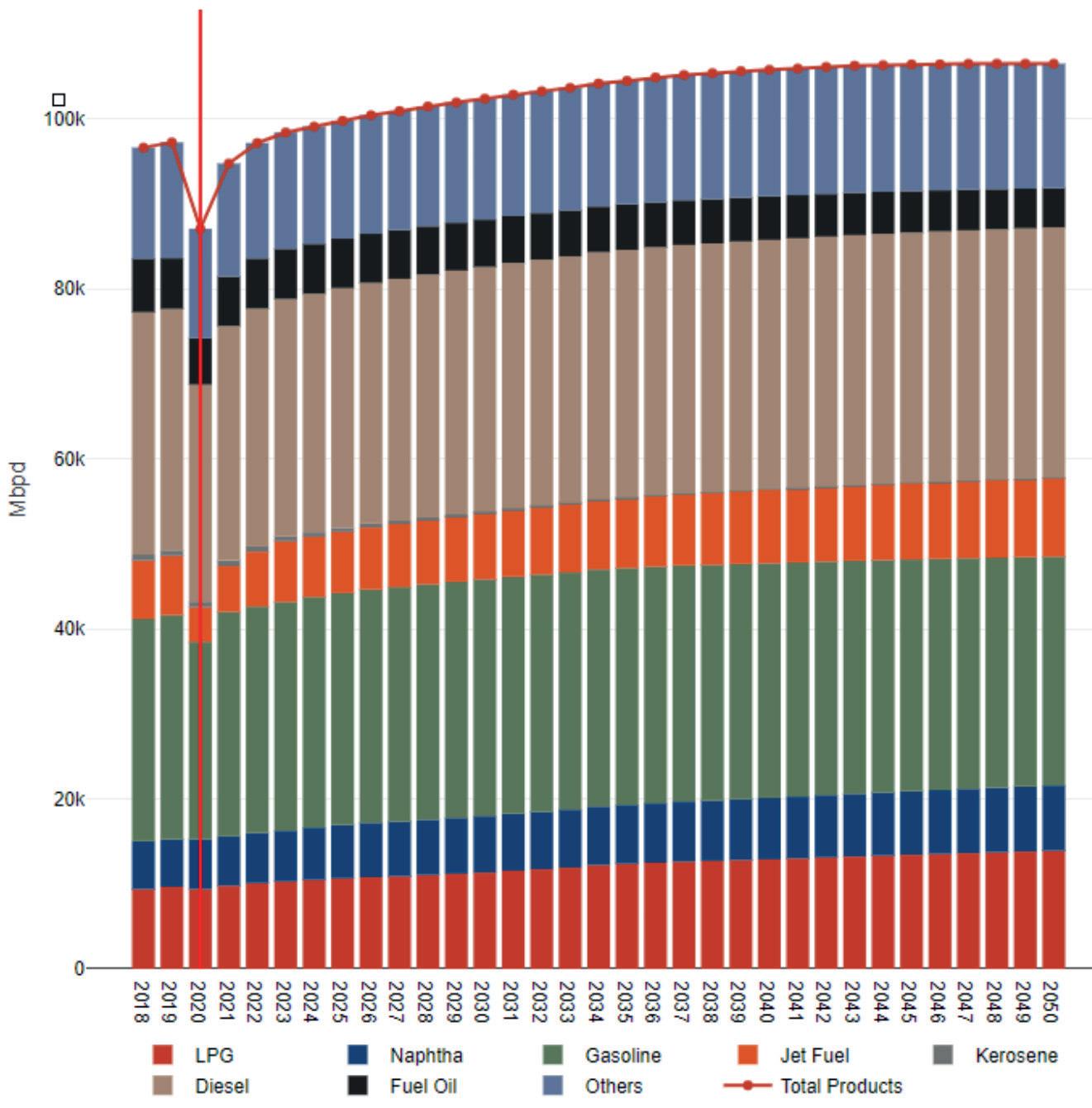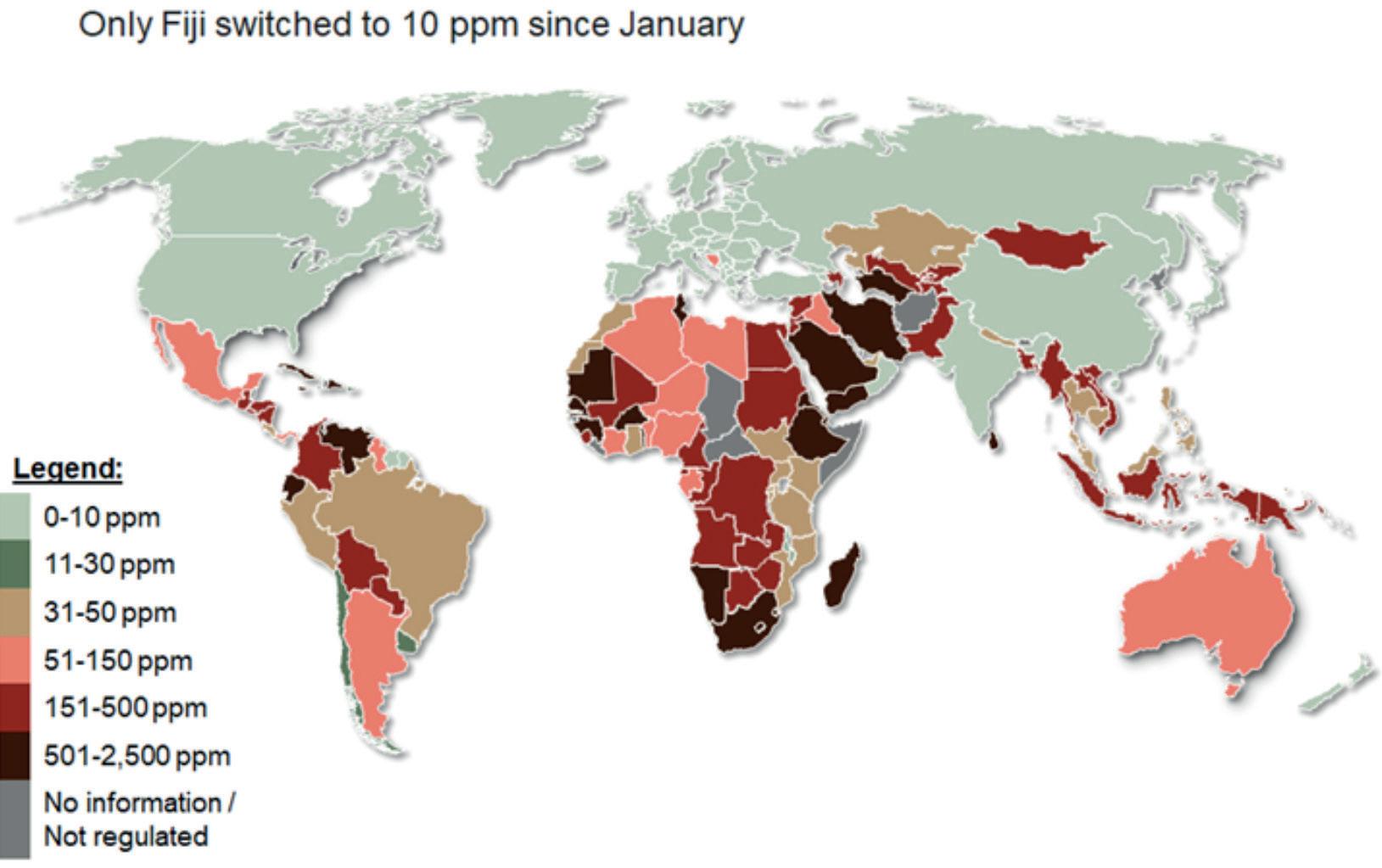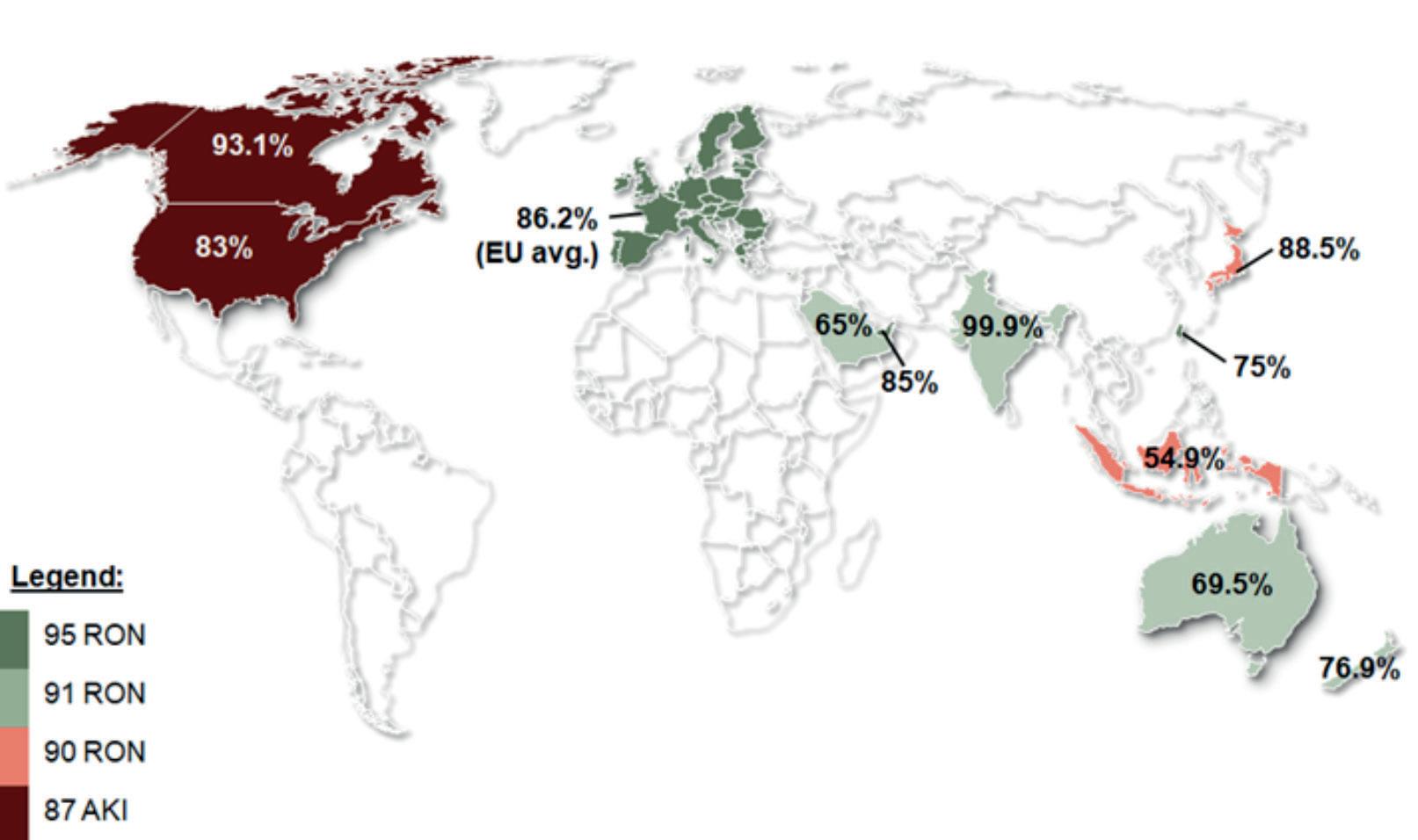
8 minute read
Fuels of the future
Kevin Bockwinkel, Randy Peterson and Samantha Presley, Elessent Clean Technologies, explore the role of gasoline in the clean fuels market.
The global fuels market will see a dramatic shift over the next 10 years. Despite its steep reduction in demand in 2020 due to the onset of the COVID-19 pandemic, global liquid fuel consumption is expected to surpass pre-pandemic levels sometime in 2022.1
Stricter fuel specifications, a changing vehicle fleet, the growing role of alternative fuels and the potential for a tightening crude market will determine developments of the fuel market through to 2030 and beyond. Europe has been leading the way towards cleaner, lower-emission fuels. The proposed Euro 7 standards are set to feature even stricter rules on emission levels for all gasoline and diesel cars, vans, trucks and buses. Other industrialised regions of the world are likely to follow. The pandemic has also accelerated the trend to decarbonise, reduce emissions and incorporate renewable fuels.
Despite the increase in the number of electric vehicles (EVs), fuel cells, and other alternatives around the globe, worldwide gasoline demand is expected to grow continuously for the next 15 years and remain above the current level until 2050 (see Figure 1). Demand for lower-quality fuels is set to decline, while demand for higher-quality products will increase. Refiners will not only be expected to produce cleaner fuels, but also to decarbonise their own operations and incorporate renewables.
Alternatives to gasoline are all beset by the challenges of scalability, raw material, sourcing, and capacity. Furthermore, most developing countries have inadequate power grids for reliable EV transportation. When you factor in strong population growth, increasing vehicle demand, and the growing middle-class preference for cars over scooters in countries such as India, as well as the fact that gasoline vehicles are less
expensive to purchase than a comparable diesel or EV, it is not surprising that industry analysts predict positive global gasoline growth for the next 15 years.
Low-sulfur fuels
Global demand for low-sulfur fuels has experienced continuous growth and is expected to continue to rise as environmental regulations become more stringent. New fuel specifications have been introduced in many countries to improve air quality and to limit harmful pollutants from vehicle emissions. Europe, Japan and South Korea led the way by setting a maximum limit of 10 ppm of sulfur as early as the mid-2000s. The US and other countries followed shortly thereafter.
While current maximum gasoline sulfur limits vary widely around the world (see Figure 2), many countries are planning to introduce lower gasoline sulfur limits of either 50 ppm or 10 ppm within the next five years. In 2021, eight countries and sub-regions announced plans to cut national gasoline sulfur content to less than 500 ppm, or import lower-sulfur gasoline. The trend of so-called ‘sulfur-free’ gasoline is clearly here to stay.
In addition to the limits on sulfur, many of the national or regional specifications also include targets for octane, aromatics, olefins and Reid vapor pressure (RVP). In fact, according to global industry consultancies, sulfur reduction and octane enhancement are the two dominant gasoline fuel objectives of governments and stakeholders around the world (see Figure 3).
Global demand for octane continues to increase as vehicle manufacturers downsize engines, add turbochargers, and increase compression to render internal combustion engines more efficient. The need for clean, higher-octane gasoline should continue to grow for the next 15 years, as shown in Figure 4. Even with the increase in alternative vehicles, many of the major automanufacturers are continuing to focus on improving the internal combustion engine. Refiners are being tasked with supplying clean, high-octane gasoline to fuel these more efficient engines.
However, typical strategies that refiners use to reduce the content of sulfur and regulated hydrocarbon (i.e. aromatics and olefins) in the gasoline that they produce have a negative impact on octane rating due to saturation of olefins and aromatics, both of which have relatively high octane numbers. For example, hydrotreating FCC gasoline can reduce the research octane number (RON) by as much as 7 – 10 numbers. This effect is impacted by the feed properties, as well as the specifics of the process and its operation. As such, refiners must weigh up sulfur reduction strategy vs associated octane loss when optimising operations.

Figure 1. Global product demand (source: Stratas Advisors, December 2021).
Figure 2. 2021 sulfur limits in gasoline. Note: countries may apply lower limits for different grades, regions/cities, or based on average content.2
Increasing gasoline pool octane
There are different approaches and methods for increasing octane. Oxygenates added to gasoline not only increase octane, but also reduce emissions in engines without oxygen sensors and controllers. This includes most small engines worldwide, and many vehicle engines in the developing world. Throughout the 1990s, the preferred oxygenate of US petroleum refiners was methyl tertiary-butyl ether (MTBE), which converts a portion of the FCC butylenes by reacting isobutylene with methanol. Resulting RON and motor octane number (MON) values are very high (MTBE has a blending octane in the range of 106 – 110), and the methanol feedstock is typically low-cost. As such, nearly 90% of the cleaner burning (reformulated) gasoline in the US originally contained MTBE as the prime pollution-fighting oxygenate. As a result of the groundwater contamination issues experienced in California and other areas, as well as concerns about the possible carcinogenic nature of MTBE, it has now been phased-out of the gasoline pool in the US. While there are other oxygenates available to meet the requirements of reformulated gasoline


Figure 3. Market share of primary octane grades (shown in %) in countries expecting fuel economy changes. Note: ‘primary market octane grade’ means X% or more of the gasoline in the country is at this RON or AKI (whichever is applicable).2
Figure 4. Global gasoline demand by octane type (source: Stratas Advisors, December 2021).
(e.g. the US Environmental Protection Agency has approved ethyl tert-butyl ether and tert-amyl methyl ether for blending), there remains some concern over the toxicology of these oxygenates. However, despite the choices made in the US, MTBE is still widely used throughout the rest of the world, particularly in Asia.
In the US today, the primary replacement oxygenate to meet regulations and enhance octane is ethanol. Unlike MTBE, ethanol is a renewable fuel, but requires additional handling and blending investments. As with MTBE, ethanol provides an octane boost to the gasoline pool as it has a blending octane of 110+. Its oxygen content is approximately 35% compared to MTBE’s content of 18%. Therefore, approximately half as much ethanol is required to meet specific oxygen requirements. Most gasohol (gasoline and ethanol) grades in the US are currently limited to 10 vol% ethanol to minimise vehicle fuel system deterioration. In the US, ethanol is produced from corn; in Brazil it is made from sugar cane. Together, these two countries account for approximately 80% of global ethanol production. As a result, the strategy used by refiners in the Americas includes adding ethanol, shutting down the MTBE unit, and then alkylating the isobutylene that fed the MTBE unit. This strategy not only allows refiners to meet regulations, but it also adds additional gasoline volume. Besides ethanol, reformate and alkylate are two additional options that can increase gasoline pool octane. Alkylate is the more desirable choice to meet the new fuel requirements due to its lack of aromatics and because of its ability to upgrade low-value LPG into a gasoline product. The alkylation process reacts light olefins (propylene, butylene and amylene) with isobutane in the presence of a strong acid catalyst (see Figure 5). The resulting alkylate product consists of a branched paraffinic compound that offers multiple benefits: high yields, high RON and MON, low RVP, zero aromatics and olefins, and very low sulfur. These properties make alkylate an ideal blendstock for cleaner-burning gasoline.
The demand for alkylate
While alkylate already represented 13% of the gasoline sold in the US in 2019, it accounted for less than 5% in many other countries, including Russia and Argentina. A region which has seen a significant change in its gasoline pool composition due to regulatory changes over the last 10 years is China. Less than 15 years ago, alkylate made up below 2% of the gasoline pool. Currently, it makes up over 6% (see Figure 6), with that number expected to grow as more alkylation units come online.
In 2019, the US accounted for 56% of global alkylate production, followed by Asia (14%) and Europe (12%). Due to heightened global environmental awareness, demand for alkylate is forecast to grow steadily between 2021 and 2031. According to industry reports, global alkylation unit capacity grew from 2.4 million bpd in 2015 to 2.5 million bpd in 2020, and is expected to expand further to an anticipated 2.75 million bpd by 2036.3 China’s alkylate industry is currently the fastest-growing in the world.
Historically, international demand for alkylate has lagged behind that of the US due to economics and less strict environmental laws. Many countries outside the US have imposed substantially higher taxes on finished gasoline products which reduces the mileage driven/year per capita. Europe, for example, has long punished gasoline with higher taxes vs diesel. However, as populations and income continue to rise in many developing countries, more gasoline will be consumed. Gasoline engines are less expensive to manufacture than diesel. When growing concerns about pollution are factored in, the status quo of using highly aromatic and/or olefinic fuels is no longer acceptable.
Recently, there has been a significant shift in the international refining industry as emphasis is placed on high-conversion refineries. This is due, in large part, to heightened worldwide environmental awareness and low-sulfur gasoline legislation. As countries implement clean











